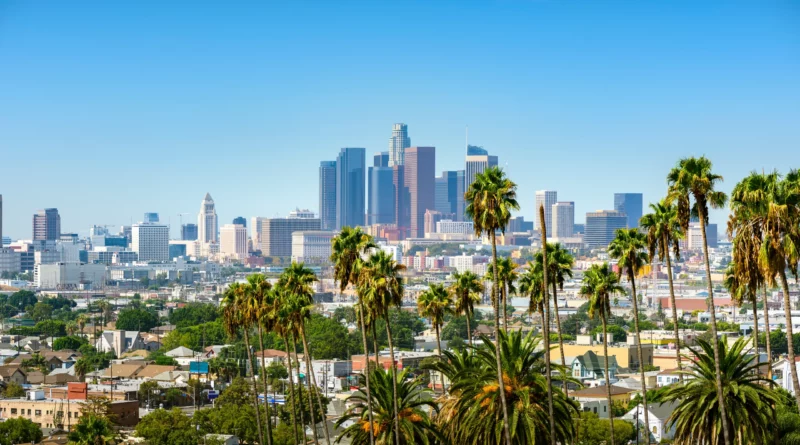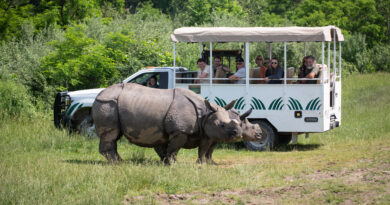History Of Los Angeles California
Los Angeles, often referred to as the “City of Angels,” is a sprawling metropolis with a history as diverse and complex as its population. Situated on the Pacific coast of Southern California, Los Angeles is known worldwide as a center of culture, entertainment, and economic power. But before it became the global city it is today, Los Angeles underwent significant transformations over centuries. This article delves into the rich history of Los Angeles, exploring its origins, major historical milestones, and its development into one of the most influential cities in the world.
Pre-Colonial Era: Indigenous Peoples of Los Angeles
Long before European explorers set foot in California, the Los Angeles area was home to several indigenous groups, most notably the Tongva people. The Tongva, also known as the Gabrieleño due to their association with the San Gabriel Mission, were the dominant group in the region. They lived in villages spread across the Los Angeles Basin, the Southern Channel Islands, and parts of the San Gabriel Valley.
The Tongva were a hunter-gatherer society with a rich culture and complex social structure. They were known for their advanced boat-building techniques, which allowed them to navigate the coast and trade with neighboring tribes. The Tongva’s deep connection to the land and their spiritual beliefs centered around the natural world would later contrast sharply with the European colonization that began in the 18th century.
Spanish Exploration and Colonization
The history of Los Angeles took a significant turn with the arrival of Spanish explorers in the 16th century. Juan Rodríguez Cabrillo, a Portuguese navigator sailing under the Spanish flag, was the first European to explore the coast of California in 1542. However, it wasn’t until 1769 that Gaspar de Portolá, leading an expedition from Mexico, laid the groundwork for Spanish colonization in the region.
In 1781, the Spanish established El Pueblo de Nuestra Señora la Reina de los Ángeles (The Town of Our Lady the Queen of the Angels), commonly known today as Los Angeles. This small settlement was founded by 44 settlers, known as “Los Pobladores,” who were a diverse group of individuals of Native American, African, and European descent. The pueblo was one of several established by the Spanish to strengthen their claim to California and to support the missions that dotted the landscape.
Mexican Rule and the Rancho Period
The Spanish Empire’s control over California ended in 1821 when Mexico gained independence. Los Angeles, like the rest of California, became part of the Mexican Republic. This period, known as the Rancho Era, was characterized by the distribution of large land grants to private individuals. These land grants, or “ranchos,” were used primarily for cattle ranching and agriculture, and they laid the foundation for California’s agricultural economy.
During this time, the secularization of the missions took place, leading to the redistribution of mission lands to private citizens. Many of the prominent Californio families who owned these ranchos played significant roles in the social and political life of Los Angeles. The city’s economy grew steadily, though it remained a relatively small town with a population of just a few thousand by the time of the American conquest.
The American Conquest and California Statehood
The Mexican-American War (1846-1848) brought dramatic changes to Los Angeles. The war ended with the Treaty of Guadalupe Hidalgo in 1848, which ceded California to the United States. Los Angeles, now part of American territory, experienced significant growth as American settlers moved westward, attracted by the promise of land and opportunity.
In 1850, California was admitted to the Union as the 31st state, and Los Angeles was incorporated as a city. The discovery of gold in Northern California in 1848 sparked the California Gold Rush, which brought a wave of settlers through Los Angeles, boosting the local economy. However, Los Angeles remained relatively isolated from the more prosperous northern regions until the arrival of the railroads in the latter half of the 19th century.
The Railroad Boom and Population Growth
The completion of the transcontinental railroad in 1869 and the extension of rail lines to Los Angeles in the 1870s and 1880s transformed the city. The Southern Pacific Railroad and later the Santa Fe Railroad connected Los Angeles to the rest of the country, making it a key transportation hub. The ease of access to the city led to a population boom, as thousands of people flocked to Los Angeles in search of new opportunities.
This period also saw a significant real estate boom, with speculators and developers promoting Los Angeles as a land of sunshine and prosperity. The city’s population grew rapidly, and its economy diversified beyond agriculture and ranching to include industry, commerce, and tourism. By the turn of the 20th century, Los Angeles was well on its way to becoming a major American city.
The Birth of the Entertainment Industry
The early 20th century marked the beginning of Los Angeles’ rise as the entertainment capital of the world. The city’s favorable climate and diverse landscapes made it an ideal location for the burgeoning film industry. In 1910, the first movie studio opened in Hollywood, a small community just northwest of downtown Los Angeles.
By the 1920s, Hollywood had become synonymous with the American film industry, attracting filmmakers, actors, and writers from around the world. The major studios—Paramount, Warner Bros., Universal, and MGM—set up shop in Los Angeles, producing films that were distributed globally. The success of Hollywood not only transformed Los Angeles into a cultural powerhouse but also contributed significantly to the city’s economic growth.
The Great Depression and World War II
The Great Depression of the 1930s had a profound impact on Los Angeles, as it did on the rest of the country. Unemployment soared, and many people lost their homes and livelihoods. However, Los Angeles was somewhat insulated from the worst effects of the Depression due to the strength of its entertainment industry and the influx of federal funds for infrastructure projects.
World War II brought a new wave of economic activity to Los Angeles. The city’s strategic location on the Pacific coast made it a key center for the defense industry. Shipbuilding, aircraft manufacturing, and other war-related industries boomed, attracting workers from across the United States. This period of rapid industrialization laid the foundation for Los Angeles’ post-war expansion.
Post-War Expansion and the Suburban Boom
The post-war era was a time of unprecedented growth for Los Angeles. The population surged as returning soldiers and their families settled in the area, spurred by the availability of affordable housing and the promise of good jobs. The development of the freeway system in the 1950s and 1960s further fueled suburbanization, as people moved out of the crowded city center into newly developed suburbs.
The automobile became central to Los Angeles’ identity during this time, with car culture influencing everything from urban planning to social life. The sprawling nature of the city, with its vast network of freeways, malls, and residential neighborhoods, came to define Los Angeles as a uniquely American metropolis.
Civil Rights Movements and Social Unrest
Los Angeles, like many American cities, was a focal point for civil rights struggles in the mid-20th century. The Zoot Suit Riots of 1943 highlighted the racial tensions between Mexican American youth and white servicemen. The Watts Riots of 1965, one of the most significant urban uprisings in American history, underscored the deep-seated issues of racial inequality, police brutality, and economic disparity in Los Angeles.
These events, along with the broader civil rights movement, led to significant changes in the social and political landscape of Los Angeles. The city became a center for activism and social justice, with leaders from various communities advocating for equality and reform.
Cultural Renaissance and Diversity
The 1960s and 1970s were a period of cultural renaissance for Los Angeles. The city’s diversity became one of its defining characteristics, as immigrants from Asia, Latin America, and other parts of the world made Los Angeles their home. This influx of new residents brought with it a rich tapestry of cultural traditions, languages, and cuisines, which have become integral to the city’s identity.
Los Angeles’ cultural scene flourished during this time, with the rise of influential music, art, and literary movements. The city became a hub for creative expression, attracting artists, musicians, and writers who contributed to its vibrant cultural landscape.
Economic Challenges and Recessions
The late 20th century was a time of economic challenges for Los Angeles. The decline of manufacturing and other traditional industries led to job losses and economic downturns in the 1980s and 1990s. The city also faced significant challenges related to crime, gang violence, and the aftermath of the 1992 Los Angeles Riots, which erupted following the acquittal of police officers involved in the beating of Rodney King.
Despite these challenges, Los Angeles managed to recover, thanks in part to the resilience of its diverse economy and the growth of new industries, including technology and entertainment. The city’s ability to reinvent itself in the face of adversity has been a hallmark of its history.
The Rise of Tech and Creative Industries
In recent years, Los Angeles has emerged as a major player in the technology sector. Silicon Beach, a coastal area stretching from Santa Monica to Playa Vista, has become a hub for tech startups and established companies alike. This new wave of innovation has brought fresh energy to the city’s economy, complementing its already strong entertainment industry.
The creative industries, including film, television, music, and digital media, continue to be the backbone of Los Angeles’ economy. The city’s reputation as a global center for creativity and innovation attracts talent from around the world, ensuring its continued relevance in the 21st century.
Environmental Challenges and Sustainability Efforts
Los Angeles has long struggled with environmental challenges, including air pollution, traffic congestion, and water scarcity. The city’s notorious smog, a byproduct of its sprawling layout and heavy reliance on automobiles, has been a persistent issue since the mid-20th century. However, in recent decades, Los Angeles has made significant strides in addressing these challenges.
Efforts to improve air quality, reduce greenhouse gas emissions, and promote sustainable urban development have been central to the city’s environmental agenda. Initiatives such as expanding public transit, investing in renewable energy, and promoting green building practices are helping Los Angeles become a more sustainable city.
Modern-Day Los Angeles
Today, Los Angeles is a global city with a population of over four million people. It is a major center for international trade, particularly through the Port of Los Angeles, one of the busiest ports in the world. The city’s economy is diverse, with strengths in entertainment, technology, manufacturing, and tourism.
Los Angeles is also a city of contrasts, where wealth and poverty, glamour and grit, coexist. It faces ongoing challenges related to housing affordability, homelessness, and social inequality. However, the city’s enduring appeal lies in its ability to constantly evolve, adapt, and reinvent itself.
Conclusion
The history of Los Angeles is a story of transformation, resilience, and diversity. From its indigenous roots and Spanish colonial beginnings to its rise as a global metropolis, Los Angeles has continually adapted to the changing times. Its legacy is reflected in the vibrant, multicultural society that defines the city today—a city that continues to shape global culture, influence economic trends, and inspire people from all walks of life.
As Los Angeles moves forward, it will undoubtedly face new challenges and opportunities. But if history is any guide, the “City of Angels” will continue to thrive as a dynamic and influential force on the world stage.
Discover more from City Towner
Subscribe to get the latest posts sent to your email.




